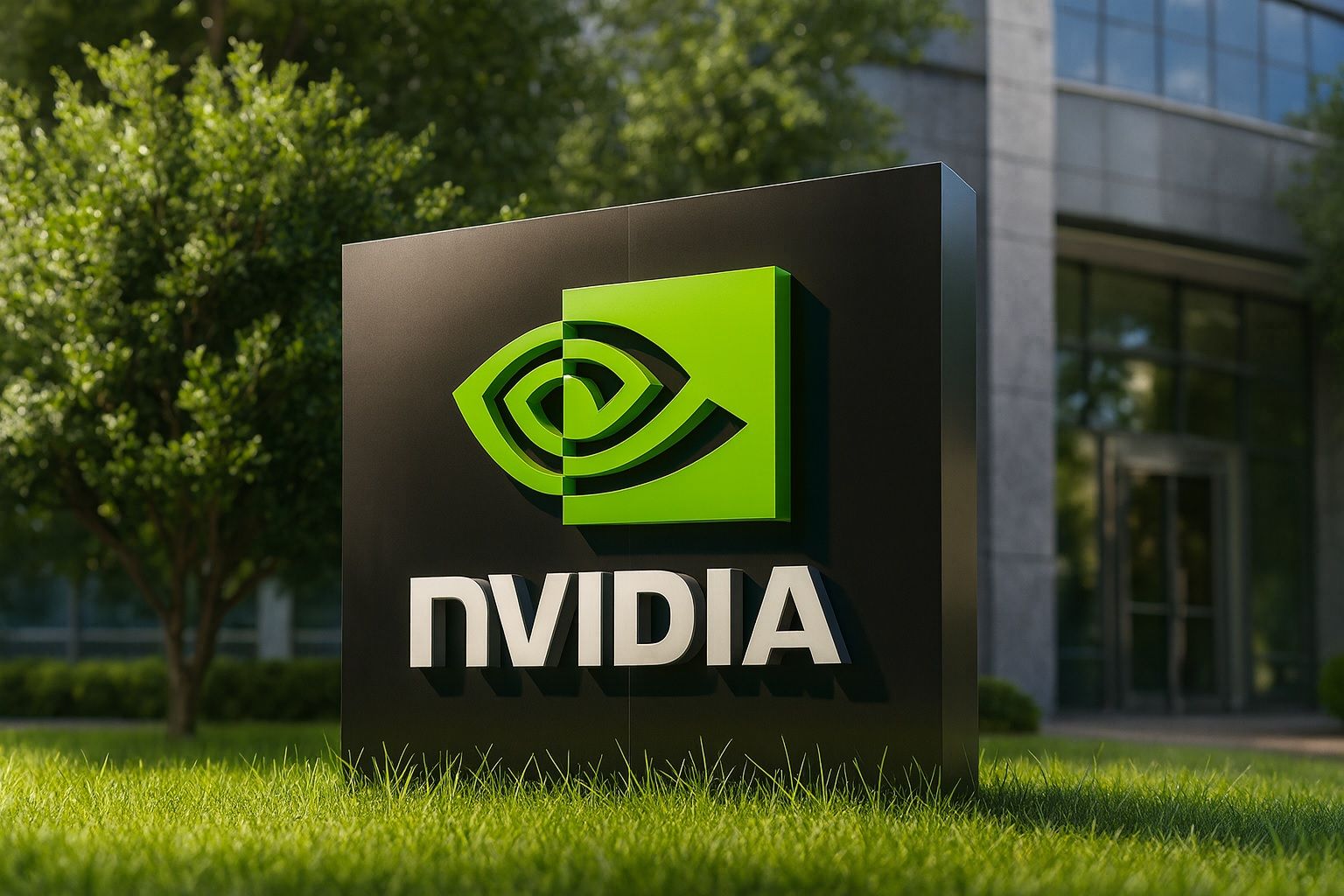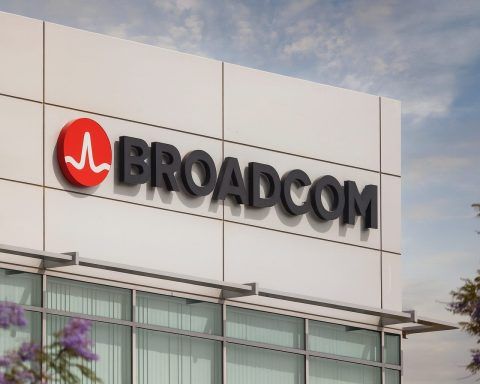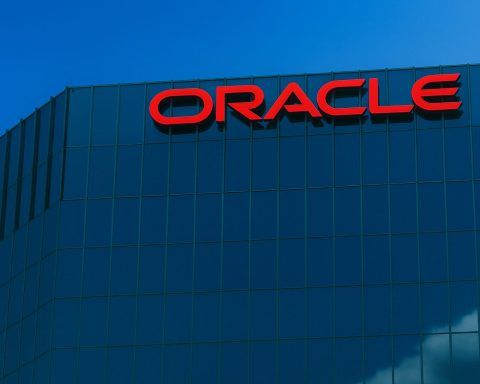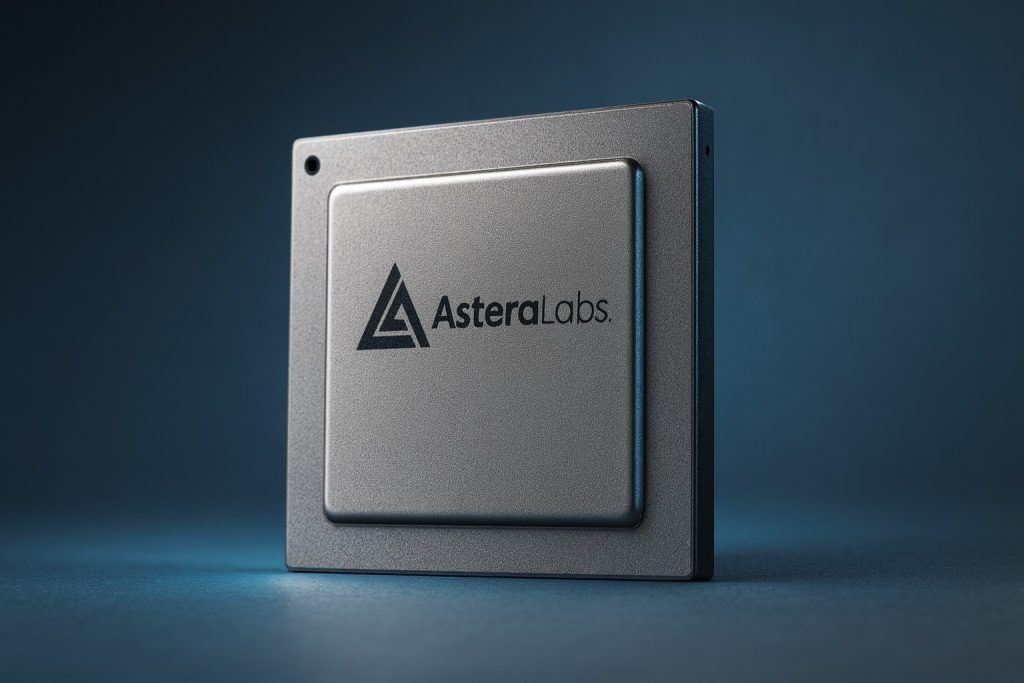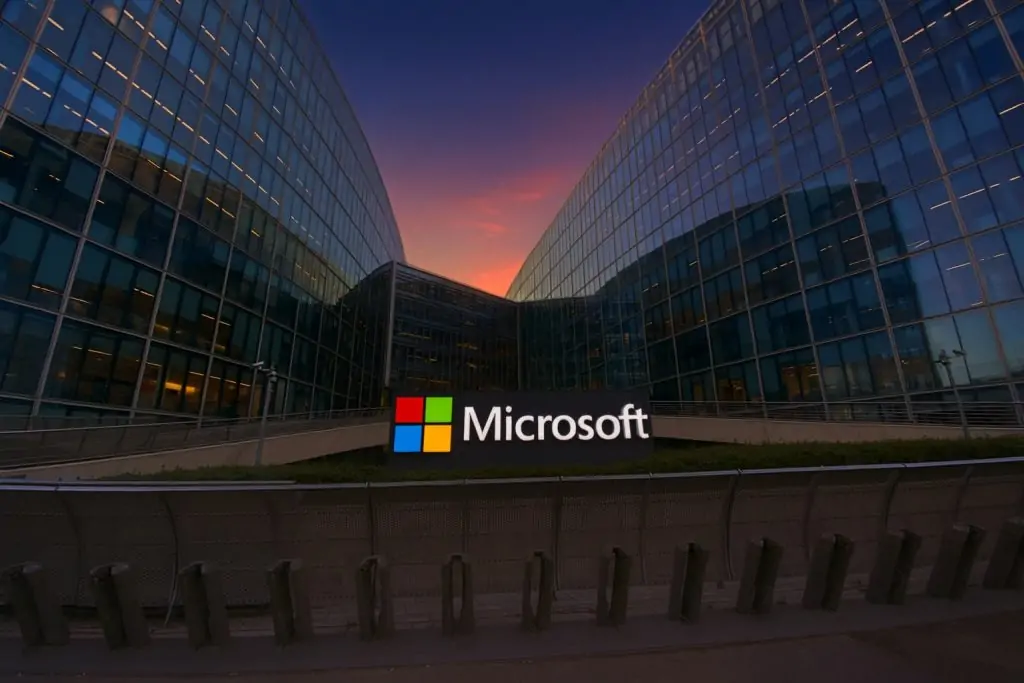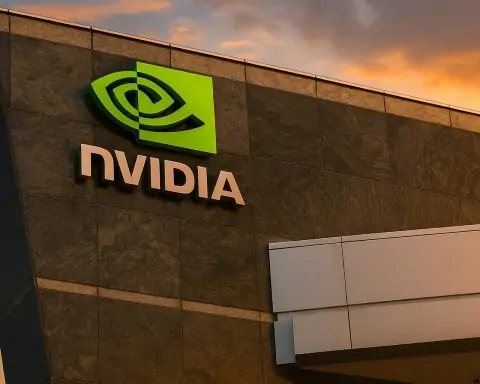Nvidia stock is back at the center of the market conversation today, November 20, 2025, as investors digest a blockbuster earnings report and a flood of new AI-infrastructure announcements that could shape the company’s growth for years.
The AI-chip leader reported record fiscal Q3 2026 revenue of $57.0 billion, up 62% year over year and 22% sequentially, with adjusted earnings per share (EPS) of $1.30, topping Wall Street’s $1.26 estimate. [1]
Early in Thursday’s session, NVDA shares jumped more than 5%, briefly adding about $240 billion in market value and igniting a global tech rally, before paring gains later in the day. [2]
Nvidia stock price today: How NVDA is trading on November 20, 2025
As of the latest afternoon quote on Thursday, Nvidia stock (NASDAQ: NVDA) is trading around $191 per share, up roughly 2.6% for the day. The stock has traded between about $191 and $197 intraday, reflecting heavy volume and brisk profit‑taking after the initial earnings surge.
In early trading, Nvidia’s gains helped push the Nasdaq and S&P 500 higher by more than 1%, as global tech stocks rallied on renewed confidence in the AI boom. [3]
Despite a recent pullback before earnings, Nvidia remains an outlier in mega‑cap tech:
- It is the only company to have crossed the $5 trillion market-cap mark, thanks to a share price that has surged more than 1,100% over the past three years. [4]
- The stock is still up around 39% year to date in 2025, even after recent volatility. [5]
- Nvidia trades at a forward price-to-earnings (P/E) ratio around 28, below AMD’s ~36 and well under Intel’s more than 60, a key argument for bulls who say the stock is expensive but not wildly out of line with peers given its growth. [6]
Earnings recap: Nvidia’s fiscal Q3 2026 blows past expectations
Nvidia’s results for the fiscal third quarter (ended October 26, 2025) reinforced its status as the central supplier of AI compute to the world’s largest cloud and enterprise customers: [7]
- Revenue: $57.0 billion (up 62% year over year; up 22% quarter over quarter)
- GAAP diluted EPS: $1.30, up 67% year over year
- Non‑GAAP diluted EPS: $1.30, up 60% year over year
- Data Center revenue: $51.2 billion (up 66% year over year)
- Networking revenue: $8.2 billion (up 162% year over year)
CEO Jensen Huang described demand for the company’s Blackwell‑generation AI platforms as “off the charts,” noting that cloud GPUs are effectively sold out and that AI compute demand continues to accelerate for both training and inference workloads. [8]
CFO Colette Kress added that Nvidia now has visibility to roughly $500 billion in cumulative revenue from its Blackwell and Rubin GPU platforms from early 2025 through the end of 2026 — and suggested that actual orders could ultimately surpass that figure as customers race to secure capacity. [9]
For the current quarter (fiscal Q4 2026), Nvidia guided for:
- Revenue of about $65 billion, plus or minus 2%, well ahead of consensus estimates around $62 billion
- GAAP and non‑GAAP gross margins in the mid‑70% range, indicating continued exceptional profitability despite heavy investment in new architectures and supply. [10]
The company also highlighted $37.0 billion returned to shareholders in the first nine months of fiscal 2026 via buybacks and dividends, with $62.2 billion still remaining under its repurchase authorization. A quarterly dividend of $0.01 per share is scheduled for December 26, 2025. [11]
AI data center boom: HUMAIN, xAI and the Gulf mega‑projects
Beyond the headline earnings, a major theme for Nvidia stock today is the wave of AI data‑center deals emerging from the U.S.–Saudi Investment Forum in Washington.
HUMAIN to deploy up to 600,000 Nvidia GPUs
State‑backed Saudi AI company HUMAIN announced an expanded strategic partnership with Nvidia, with plans to deploy up to 600,000 of Nvidia’s latest AI GPUs (including Blackwell GB300 platforms) across Saudi Arabia and the United States over the next three years. [12]
These deployments will power HUMAIN’s sovereign AI infrastructure, including:
- Massive data centers in Saudi Arabia and new facilities in the U.S.
- Training of HUMAIN Chat, aimed at serving more than 400 million Arabic speakers, using Nvidia’s Nemotronopen models.
- “Physical AI” initiatives using Nvidia Omniverse libraries to simulate and optimize real‑world systems. [13]
For Nvidia shareholders, the HUMAIN deal reinforces the idea that non‑U.S., sovereign AI projects are becoming a meaningful source of long‑term GPU demand, complementing the hyperscale cloud providers that dominate current revenue.
U.S. approves exports of advanced Nvidia Blackwell chips to Saudi Arabia and the UAE
In parallel, the U.S. Commerce Department confirmed it has authorized exports of up to 35,000 Nvidia Blackwell (GB300) chips each to Saudi Arabia’s HUMAIN and Abu Dhabi–based AI firm G42, under strict security and reporting conditions. [14]
Those chips, worth an estimated $1 billion in total, will underpin large AI data‑center projects in both countries and deepen Nvidia’s role in global AI infrastructure — even as the company remains restricted from selling its most advanced GPUs directly into mainland China. [15]
xAI, Luma AI and the broader Middle East build‑out
Additional reporting indicates that:
- Elon Musk’s xAI is partnering with HUMAIN to build a 500‑megawatt AI data center in Saudi Arabia, expected to use hundreds of thousands of Nvidia GPUs. [16]
- HUMAIN‑linked projects and Gulf partners are targeting up to 1 gigawatt of AI infrastructure by 2030, positioning the region as a major long‑term Nvidia customer. [17]
Taken together, these announcements support Nvidia’s message that demand for AI compute is both global and durable, not limited to a handful of U.S. cloud giants.
Arm Neoverse and NVLink Fusion: Extending Nvidia’s data center reach
Another piece of today’s Nvidia story is more technical but potentially just as important for long‑term growth: the company’s expanding partnership with Arm.
Arm announced that its Neoverse data‑center platform will integrate Nvidia’s NVLink Fusion interconnect, creating a coherent, high‑bandwidth fabric that links Arm‑based CPUs with Nvidia GPUs and other accelerators at rack scale. [18]
Key implications for Nvidia stock:
- Broader ecosystem: NVLink Fusion support across Arm Neoverse makes it easier for chipmakers and system builders to plug their own CPUs or accelerators into Nvidia‑centric AI systems.
- Performance per watt: The design targets “intelligence per watt” — a critical metric as AI clusters run into power and cooling limits. [19]
- Sticky platform: By becoming the default high‑speed fabric for many Arm‑based AI servers, NVLink Fusion can further entrench Nvidia hardware (and software, via CUDA) at the center of data‑center architectures.
For investors, this is less about near‑term revenue and more about protecting Nvidia’s moat as hyperscalers, sovereign clouds and AI startups experiment with custom silicon and alternative CPU architectures.
Wall Street reaction: “Beat and raise” vs. AI bubble fears
Analysts mostly cheer — with higher price targets
Wall Street’s initial response has been overwhelmingly positive:
- Barron’s reports that Nvidia shares climbed around 4.5% to roughly $195 in morning trading, and that the average analyst price target has moved up to about $248, implying meaningful upside from current levels. [20]
- Some research shops have upgraded or reiterated bullish ratings, citing explosive data‑center growth, strong Q4 guidance and a valuation that looks reasonable relative to AI peers. [21]
- On Yahoo Finance, Bernstein’s Stacy Rasgon described the print as a classic “beat and raise” quarter, saying it’s hard to ask for much more from Nvidia given both the numbers and guidance. [22]
Strategists also note that Nvidia’s earnings have temporarily calmed “AI bubble” fears, lifting global equity markets after a sharp tech‑led sell‑off in recent weeks. [23]
But not everyone is convinced
Even as the stock spikes, several high‑profile voices continue to warn about risks:
- A Reuters column points out that Nvidia’s half‑trillion‑dollar backlog of AI chip bookings through 2026 is, by definition, half a trillion dollars of spending by its customers — with uncertain long‑term profitability. Four customers now account for about 61% of Nvidia’s sales, raising concentration risk on both sides of the trade. [24]
- Bank of America’s latest fund‑manager survey finds that being “long the Magnificent Seven” remains the most crowded trade, while an AI bubble is seen as the biggest tail risk for markets. [25]
- Business Insider reports that “Big Short” investor Michael Burry has again taken aim at Nvidia, questioning the longevity of its chips, the pace of stock‑based compensation and dilution, and complex “give‑and‑take” deals where Nvidia invests in AI startups that, in turn, buy huge GPU allocations. [26]
Nvidia executives pushed back strongly on the bubble narrative, arguing that we’re still in the “early innings” of AI adoption and that the industry could support $3–4 trillion in annual AI infrastructure spending by the end of the decade — with Nvidia expecting to remain a key beneficiary. [27]
Valuation and fundamentals: Can Nvidia grow into a $5 trillion giant?
From a fundamentals perspective, today’s move is about whether Nvidia can grow fast enough to justify — and sustain — a multi‑trillion‑dollar valuation.
Key points for investors to weigh:
- Growth vs. concentration
- Margins and cash generation
- Nvidia is running gross margins in the mid‑70% range — astonishing for a hardware‑centric business. [30]
- Net income in Q3 topped $31.9 billion, and the company is returning tens of billions to shareholders via buybacks while still funding aggressive R&D, networking and new architectures like Rubin and Blackwell Ultra. [31]
- Relative valuation
- On a forward P/E near the high‑20s, Nvidia no longer looks cheap, but it doesn’t obviously sit in “bubble territory” when compared with high‑growth chip peers. [32]
- However, the absolute market cap above $5 trillion sets a very high bar: markets are effectively betting that Nvidia will remain the dominant supplier of AI compute through the next decade, despite intensifying competition and potential technology shifts. [33]
Key risks for Nvidia stock going forward
Even on a day of celebration for Nvidia bulls, investors watching NVDA should keep several risks in view:
- AI capex cycle risk
- If cloud providers, sovereign funds or startups decide they have overbuilt AI capacity, GPU orders could slow sharply, pressuring revenue and margins. [34]
- Customer concentration
- With four customers responsible for more than 60% of revenue, any delay or renegotiation of major projects could have outsized impact on quarterly results. [35]
- Regulation and export controls
- Nvidia is already barred from selling its most advanced GPUs into China, and new U.S. approvals for the Middle East come with stringent conditions. Future policy shifts could reshape where and how Nvidia can grow. [36]
- Competition and custom silicon
- Rivals like AMD, Intel, Qualcomm and Arm ecosystem partners are pushing alternative AI accelerators and CPU‑GPU combinations, while big customers increasingly experiment with in‑house AI chips. [37]
- Investor sentiment & “AI bubble” narrative
- After a 1,000%+ multi‑year rally, even strong quarters can disappoint if investors begin to focus more on return on invested capital for AI projects than on raw growth. [38]
What today means for Nvidia shareholders and watchers
For now, November 20, 2025 will likely be remembered as another milestone in Nvidia’s AI story:
- The company delivered a textbook beat‑and‑raise quarter with record revenue and earnings.
- Management effectively reaffirmed a half‑trillion‑dollar GPU pipeline over the next two years.
- New sovereign AI and Middle East deals, plus the Arm Neoverse NVLink Fusion integration, broaden Nvidia’s reach in global AI infrastructure.
- Global markets, rattled by AI bubble fears, appear to have taken a collective sigh of relief, at least for today. [39]
At the same time, the very scale of Nvidia’s success is sharpening scrutiny. Skeptics question whether customers will ultimately earn acceptable returns on hundreds of billions of dollars spent on GPUs, and whether today’s AI spending surge could morph into tomorrow’s overcapacity hangover. [40]
For investors, the takeaway is nuanced:
- Short‑term: Nvidia’s fundamentals and near‑term outlook remain exceptionally strong, and today’s move reflects that.
- Medium‑ to long‑term: Returns from here will likely depend on how long the AI build‑out can sustain current growth rates, how aggressively competitors respond, and how policymakers shape the global flow of advanced chips.
As always, this article is for information and news purposes only and is not financial advice. Anyone considering trading or investing in NVDA should evaluate their own risk tolerance, time horizon and independent research.
References
1. investor.nvidia.com, 2. www.reuters.com, 3. www.reuters.com, 4. www.reuters.com, 5. www.reuters.com, 6. www.reuters.com, 7. investor.nvidia.com, 8. investor.nvidia.com, 9. www.datacenterdynamics.com, 10. investor.nvidia.com, 11. investor.nvidia.com, 12. www.prnewswire.com, 13. www.prnewswire.com, 14. www.reuters.com, 15. www.reuters.com, 16. nypost.com, 17. www.reuters.com, 18. newsroom.arm.com, 19. newsroom.arm.com, 20. www.barrons.com, 21. seekingalpha.com, 22. www.investopedia.com, 23. www.reuters.com, 24. www.reuters.com, 25. www.reuters.com, 26. www.businessinsider.com, 27. www.investopedia.com, 28. investor.nvidia.com, 29. www.reuters.com, 30. investor.nvidia.com, 31. investor.nvidia.com, 32. www.reuters.com, 33. www.reuters.com, 34. www.reuters.com, 35. www.reuters.com, 36. www.datacenterdynamics.com, 37. newsroom.arm.com, 38. www.reuters.com, 39. www.reuters.com, 40. www.reuters.com
